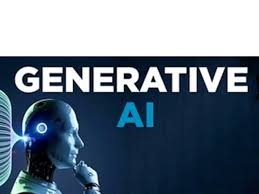- 1-888-253-3960
- enquiry@vynzresearch.com
-
This is lorem ipsum doller
Generative AI Market Size 2025: Will It Cross $100 Billion?
Overall, as Gen AI's standalone importance starts to wane, 2025 will be the year that businesses move past it. To enable high-value use cases unique to their company, the organization will concentrate on developing broad AI ecosystems that expand on Gen AI offerings.
Generative artificial intelligence, or simply "gen AI," is a subset of artificial intelligence that can produce original ideas and content, such as dialogues, narratives, pictures, videos, and music. It is capable of learning any complex subject, including biology, chemistry, programming languages, art, and human language.
The global market for generative AI, a subset of artificial intelligence, is rising quickly due to reasons like consumers' growing health consciousness, the ease of accessing online health services, and the increased adoption of digital technology. As more companies and sectors realize the promise of generative AI technology, this trend is anticipated to continue.
Customer preferences:
Concerns about data privacy have increased the demand for AI solutions that put user security and privacy first. As generative AI solutions become more widely used, consumers preference for personalized and configurable products and services too are growing. The need for greater control and customization in people's interactions with technology is being driven by changes in lifestyle circumstances and cultural quirks.
Trends in the market:
In the worldwide and generative AI industry, the usage of chatbots and virtual assistants powered by AI to enhance customer service and automate corporate processes is growing in popularity. This trend is expected to continue as AI technology advances and becomes more accessible to businesses of all sizes. Because technology may increase productivity, cut expenses, and improve customer satisfaction, this has important ramifications for industry participants. Furthermore, the application of AI to generative design is becoming increasingly popular, enabling quicker and more creative product design. The AI market's future is probably going to be shaped by these tendencies, which could have an impact on business structures and job responsibilities.
The global market for generative AI, a subset of artificial intelligence, is rising quickly due to reasons like consumers' growing health consciousness, the ease of accessing online health services, and the increased adoption of digital technology. As more companies and sectors realize the promise of generative AI technology, this trend is anticipated to continue.
Local special circumstances:
China's market for generative AI is growing quickly as a result of the government's encouragement of the use of AI in a number of sectors. The nation's vast population and cutting-edge technological infrastructure make it an ideal place to create generative artificial intelligence (AI) solutions. Furthermore, the Chinese market has grown even faster due to the country's cultural emphasis on efficiency and innovation. The elderly population of Japan and their growing demand for individualized and affordable healthcare solutions are driving the market there. As a result, AI-powered medical equipment and virtual assistants that address the particular requirements of the senior population have become more popular.
Underlying macroeconomic variables:
Government backing, investment in AI infrastructure, and technology breakthroughs are some of the macroeconomic factors that have a significant impact on the growth of the generative AI market. In contrast to areas with regulatory obstacles and little financing, nations with robust investments in AI technologies and supportive regulatory frameworks are witnessing faster market expansion. Furthermore, the global adoption of generative AI is being driven by the growing need for creative solutions to improve corporate efficiency as well as the increasing demand for intelligent automation across a range of industries.
Conclusion:
Generative AI is a revolutionary technology creating new opportunities in a wide range of sectors which enables the production of synthetic data and content. It has various important uses, ranging from education and healthcare to entertainment and the arts. We may identify the main potential and difficulties in this rapidly evolving field by being aware of the generative AI market statistics.
The AI market is expanding quickly. According to research, an increase of 26.51% can reach a staggering USD 738.7 billion by 2030 as it is projected in the year 2025 Generative AI market is the technology creating new opportunities in a wide range of sectors which enables to reach USD 305.5 billion, up from USD 242.8 billion in 2023.

